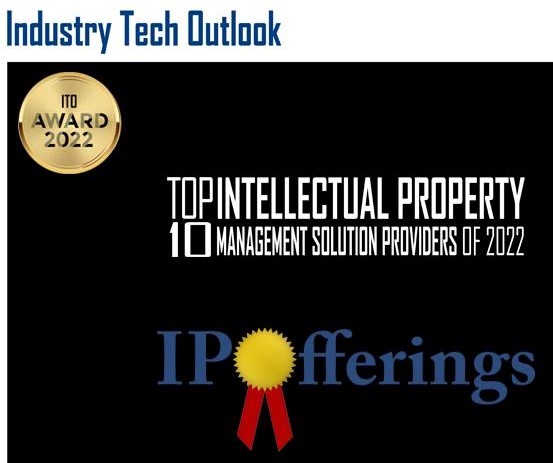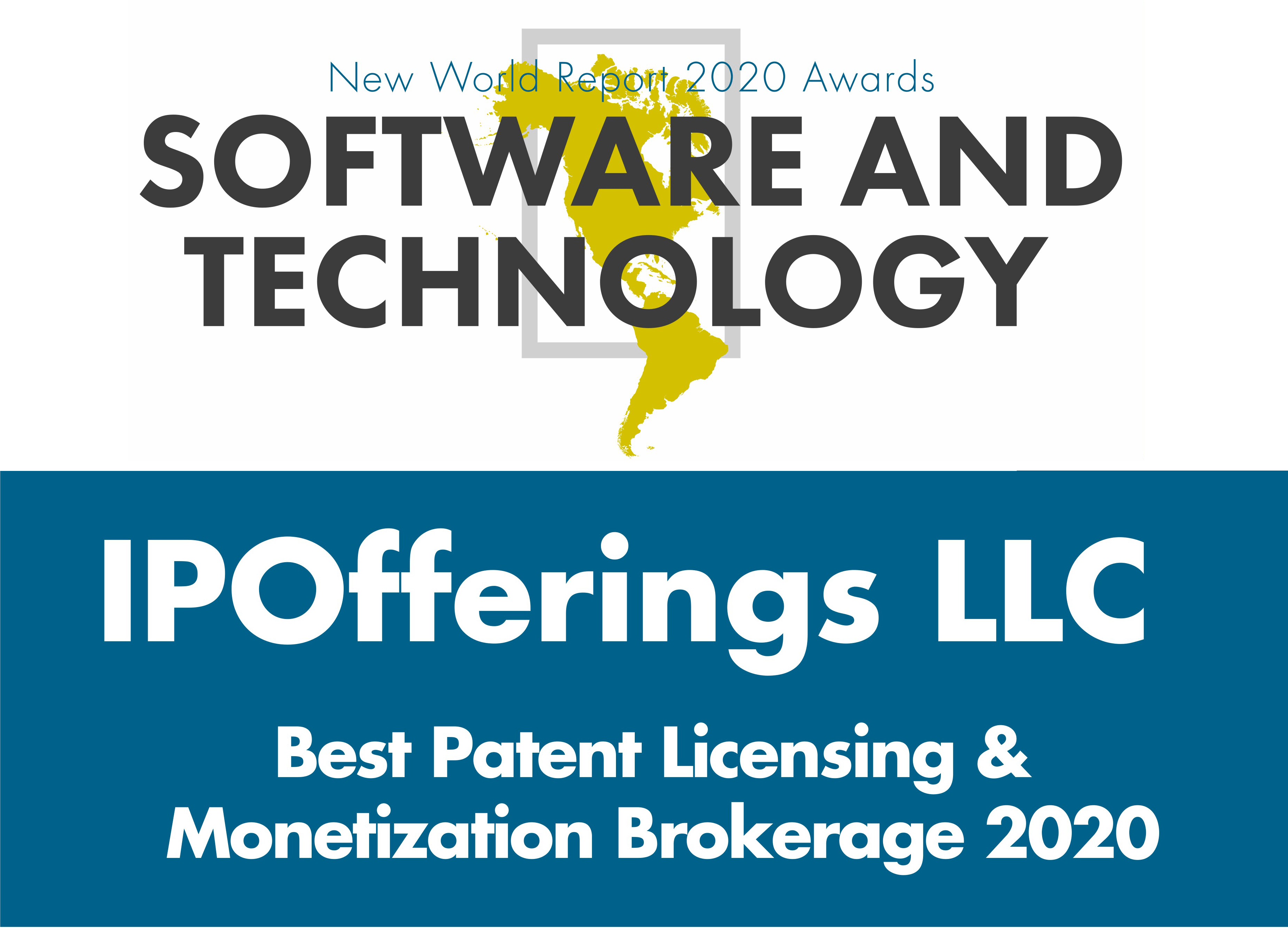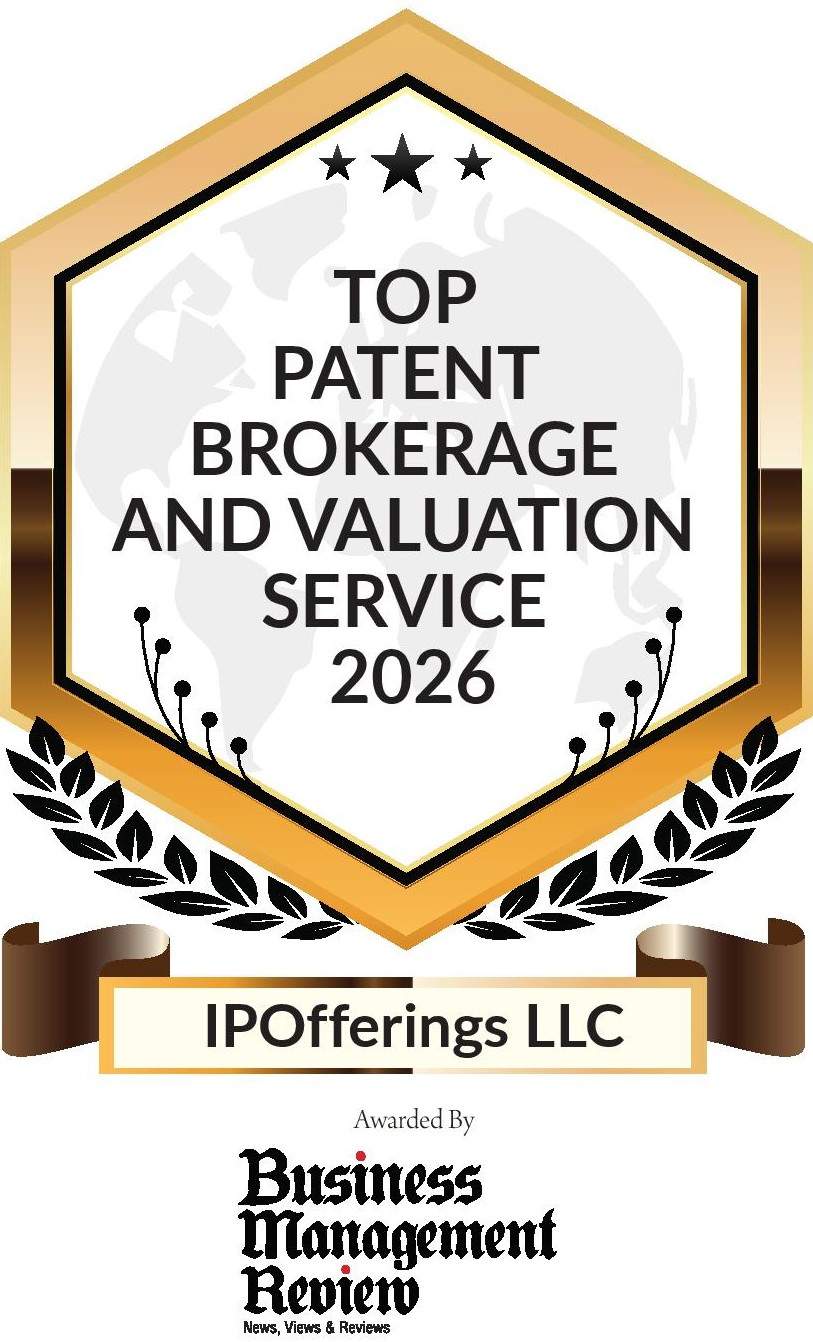Patent MarketPlace: Automative/Vehicular Patents and Trademarks for Sale
 Tool for Removal of Stones from Between Dual Tires (Grover): U.S. Patent No. 12,337,804
Tool for Removal of Stones from Between Dual Tires (Grover): U.S. Patent No. 12,337,804
Dual-tire vehicles operating in rugged environments such as quarries, construction sites, landfills, trash yards, logging sites, and mines frequently accumulate stones and other debris that become lodged between the truck’s dual tires. While a minor issue on paved roads, this presents a significant safety hazard in off-road settings. When these lodged stones eject at high speed, they pose a serious risk of causing property damage and injuring – even possibly killing – pedestrians or occupants of nearby vehicles.
Current methods to remove stones lodged between dual times are manual and labor-intensive, using hammers or pry bars to knock the stone loose, or removing the outer wheel entirely. This patented invention introduces an efficient, manually powered, mechanical tool that safely extracts lodged stones from between dual tires. The device functions as a compact, hand-operated winch that uses a hook to secure the stone and a belt mechanism to manually pull it free. This innovative tool provides an essential, rapid solution for vehicle operators, enhancing safety and operational efficiency wherever dual tires are utilized in unpaved terrain.
U.S. Patent No. 12,337,804 for a “Stone removal system” will enable any manufacturer of truck tools to introduce a practical and affordable new tool for truck owners and operators that will quickly dislodge stones jammed between dual tires.
 Next-Generation Passenger Bus (Chavez): U.S. Patent No. 12,312,016
Next-Generation Passenger Bus (Chavez): U.S. Patent No. 12,312,016
Travelling by bus is affordable, but not very comfortable. It is cramped and the view is not very good – primarily the back of the seat in front of you! Surely there must be a way to make passenger bus travel more comfortable.
There is. This patent begins with a progressive floor elevation system that gradually increases the height of modular flooring sections from front to rear creating “stadium seating” that improves every passenger’s view. It also creates additional underfloor storage space. It includes elevated passenger seating assemblies with rigid support structures and adjustable footrests for enhanced comfort and accessibility. The additional underfloor space can be used for insulation, climate control, and video monitoring. In addition, an engine safety cover constructed from fire-resistant, thermally insulating, and structurally reinforced materials provides additional safety. And a swing-down exit mechanism at the rear of the bus serves as a structural component during normal operation and converts to an evacuation slide or stairs during emergencies.
U.S. Patent No. 12,312,016 for a “Retrofitted bus with improved passenger experience” would enable any manufacturer of bus bodies – or renovator of older busses – to create a next-generation bus that is infinitely more comfortable and convenient than the busses on the road today.
 Improved Auto Passenger Seating (Thinking of You): U.S. Patent Application 20240217395
Improved Auto Passenger Seating (Thinking of You): U.S. Patent Application 20240217395
While automobile manufacturers put considerable thought into engines and transmissions, sound systems and sophisticated electronics, and navigation and communications, they put little thought into seating. While the trim might be attractive, automobile seating is not. The primary problem is that second and third row seats are at the same level as the first-row seats. That limits the second and third-row passengers’ view of the road and leads to car sickness.
This patent filing addresses that issue by creating second and third-row seats that are progressively higher. The passenger can see the road ahead, and the higher view also dramatically reduces motion sickness. As an added benefit, the higher seats create storage compartments below them, giving passengers more room in the cabin of the vehicle. The technology also enables adaptable floor height for the vehicle.
U.S. Patent Application 20240217395 for “Elevated passenger seats for vehicles” can be used by an automobile manufacturer to address a customer comfort factor that has until now been largely ignored!
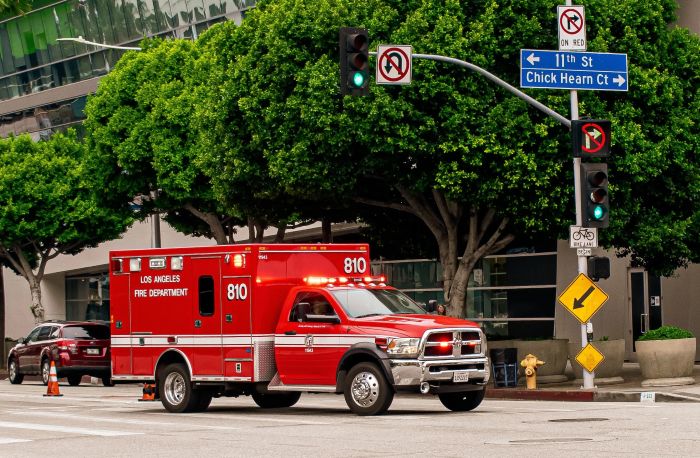 Driver Warning of Emergency Vehicles (Alert Mechanism): U.S. Patent Nos. 11,984,026 and 12,223,832
Driver Warning of Emergency Vehicles (Alert Mechanism): U.S. Patent Nos. 11,984,026 and 12,223,832
All drivers know they need to yield to emergency vehicles. But most cars today have fairly well insulated interiors, and with music coming over the sound system or any other distraction, it is easy for a driver to not hear a siren from an ambulance, fire truck, police vehicle, or other first responder. And once the driver does hear the siren, he or she has to determine the location of the emergency vehicle and its proximity to the driver’s vehicle. Is it behind the vehicle? Coming toward the vehicle? On a side street or parallel road? The driver has just seconds to make a decision!
This patent family addresses that need by creating a device with a network of acoustic and light wave sensors that are connected to a dongle. The incoming acoustic and light wave signals are processed through a series of rolling frequency and amplitude summary tables to determine the type of emergency vehicle it is, and if it is within a certain radius of the driver’s vehicle. If it is, the device sends an alert to the vehicle notifying the driver and passengers.
U.S. Patent Nos. 11,984,026 and 12,223,832 for a “System and method for emergency vehicle detection and alerting” would enable any automobile manufacturer or aftermarket electronics supplier to bring to market a product that will provide enhanced driving safety to both its customers and the first responder community.
 Wireless Network Data Router for Vehicles (Instituto de Telecomunicacoes): U.S. Patent No. 9,439,121
Wireless Network Data Router for Vehicles (Instituto de Telecomunicacoes): U.S. Patent No. 9,439,121
We all need to be connected, and that includes when we are in our car or truck. This patent directly addresses that need. It creates vehicular connection technology that is compliant with all current vehicular communication system standards. It supports multi-channel seamless communication through a single device and synchronization through GPS. The device platform is based on a single-board computer, several network interfaces and antennas, and an integrated GPS.
The technology covered by this patent comprises:
- Multi-connection interface for Wireless Access in Vehicular Environments (WAVE)
- Wireless local area network Wi-Fi interface
- Mobile network data interface
- Downlink data connection interface for the vehicle and its occupants
- Data processing unit for routing data between all interfaces
- Datta processing unit configured to calculate a score for each reachable network on the WAVE, Wi-Fi, and mobile network interfaces, and switch and uplink connections of the wireless network data router to the network with the best score
U.S. Patent No. 9,439,121 for a “Method and apparatus for multi-network communication in vehicular networks” would enable any auto manufacturer to leapfrog the vehicular communications capabilities of all of its competitors!
 Improved Performance and Sound for Harley-Davidson Milwaukee-Eight (Carter): U.S. Patent No. 10,494,977
Improved Performance and Sound for Harley-Davidson Milwaukee-Eight (Carter): U.S. Patent No. 10,494,977
Motorcyclists want power, sound, and the wind in their faces. That’s why they buy motorcycles instead of sedans or SUVs. Unfortunately, some motorcycle buyers do not get the power and sound they seek. In 2017, Harley Davidson introduced the Milwaukee-Eight® engine for its line of touring motorcycles. The Milwaukee-eight factory exhaust system comes with restricted baffles inside of the mufflers along with catalytic converters in the headers that seriously restrict the emission system, resulting in a dramatically reduction of the iconic engine sound that makes a Harley a Harley.
This patented invention is placed inside the muffler housing, and it allows more combustion gases to flow smoothly through the mufflers, creating both better performance and better sound. The freer-flowing gasses dramatically improve engine performance. In fact, this invention enables a Harley to sound like a Harley and move like a Harley!
U.S. Patent No. 10,494,977 for an “Internal straight core” would enable any supplier of Harley-Davidson parts and accessories to offer a product for Milwaukee-Eight owners to improve both performance of their bikes and enable them to sound like Harleys! And do so without creating vehicle inspection problems for their owners. In addition to the patent, the inventor also has three Registered U.S. Trademarks available for acquisition – U.S. Trademark 76687393 for 4 Dxtreme Custom Pipes, U.S. Trademark 86373697 for L.a.L. Tales, and U.S. Trademark 87553716 for Psycho Mufflers.
Milwaukee-Eight is a registered trademark of Harley-Davidson Motor Company, Inc.
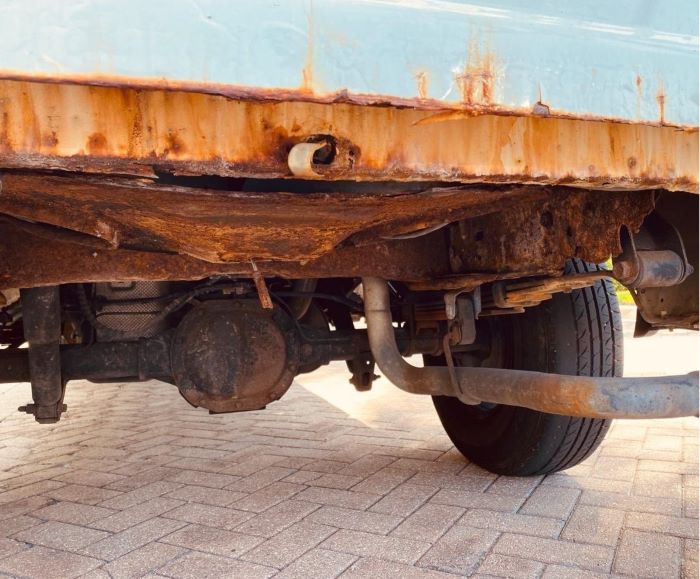 Corrosion-Proof Pickup Truck Bedliner (Bacchus): U.S. Patent No. 10,882,469
Corrosion-Proof Pickup Truck Bedliner (Bacchus): U.S. Patent No. 10,882,469
Pickup trucks are durable and popular. In fact, the three best-selling vehicles in the U.S. are all pickup trucks. And while they can be driven hundreds of thousands of miles and they can stand up to any type of load from cinder blocks to firewood to trash to gravel and many, many more, there is one thing that literally destroys a pickup truck’s cargo bay: Swimming pool chemicals. The chlorine, muriatic acid, and other chemicals used to treat swimming pools attack the steel and aluminum cargo bays of pickup trucks and quite literally destroy them! The corrosion then spreads to the rear half of the truck frame and the rear suspension, forcing the business owner to retire the pickup much sooner than the expected hundreds of thousands of miles – with essentially NO resale or trade-in value.
This patent offers a practical and affordable solution. It creates a pick-up truck bedliner that completely protects the cargo bay from corrosion. It has a waterproof bottom, four walls that totally contain all the chemicals, supplies, and tools, and upper lips that protect the front, the sides, and the tailgate. The bedliner features a sealable drain on the back side. Just drop down the tailgate, pull out a discharge line, open the drain, and any liquids in the bedliner drain out over the tailgate and away from the truck. The user can rinse out the cargo bay to keep it clean and chemical-free, saving the truck from corrosion. Conventional bedliners protect the cargo bay from dents and scratches, but they have drain holes that direct the pool chemicals to the floor of the cargo bay where they get trapped and ruin the truck bed. Not good! The pickup truck bedliner covered by this patent provides total protection for the cargo bay, ensuring that the truck will actually have some trade-in value when the time comes for a new pickup.
U.S. Patent No. 10,882,469 for a “Protective bedliner” will enable any pickup truck bedliner manufacturer to offer a new line of products for the swimming pool maintenance industry as well as other truck owners who deal with corrosive materials.
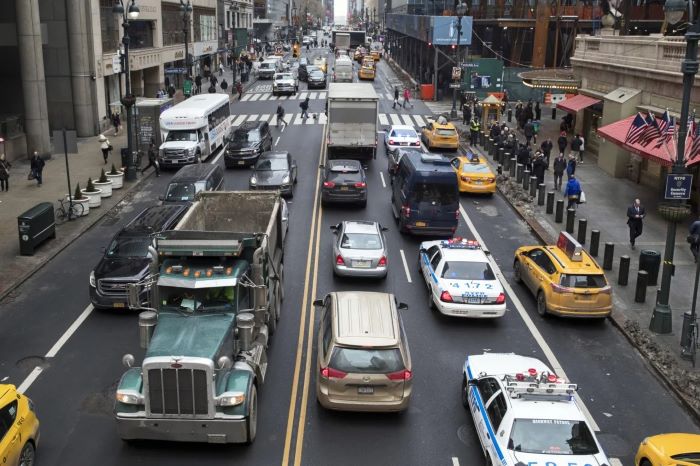 Improved Traffic Flow Management (Hart): U.S. Patent No. 9,275,545
Improved Traffic Flow Management (Hart): U.S. Patent No. 9,275,545
There was one benefit to the recent pandemic – less traffic on streets and highways. But traffic on streets and highways has rebounded and now surpasses pre-pandemic levels. Sitting in traffic is not just frustrating, it is a waste of valuable time and a waste of valuable fuel, and a major contributor to air pollution! Unfortunately, previous attempts to improve traffic flow with cameras have been too computationally heavy as they required massive computer capacity, but they still lacked the ability to see what they really needed to see, anticipate, and plan for. Camera-based systems have simply not been effective!
This patent takes a different approach. It piggybacks on existing traffic signal networks to maximize the flow of traffic using vector imaging technology sensors that constantly report to a CPU that collects and interprets the data, and controls traffic signals. Rather than simply rely on cameras, the technology in this patent uses Lidar, ultrasonic, and other sensors – just as autonomous vehicles do – to “see” in 3-D. The technology sees traffic from as far as a mile away in every direction, seeing around hills, valleys, curves, and obstacles. The technology identifies all vehicles in the area and it anticipates what decisions needed to be made to optimize traffic flow through any given intersection in real time. Instead of reacting after a car is detected, it anticipates and manages the traffic flow that will be coming into an intersection.
U.S. Patent No. 9,275,545 for a “System and method for monitoring vehicle traffic and controlling traffic signals” would enable any supplier of traffic control equipment and systems to leapfrog the technology of all of its competitors!
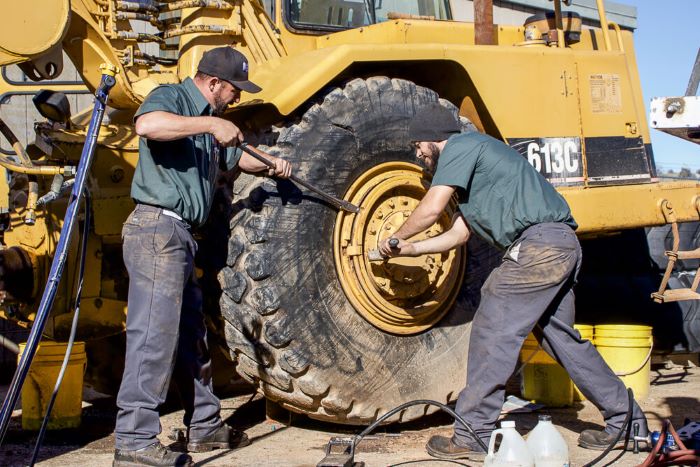 Wheel Lift for Changing Tires (Smith): U.S. Patent No. 11,339,039
Wheel Lift for Changing Tires (Smith): U.S. Patent No. 11,339,039
Anyone who ever had to change a tire knows the most difficult part of the task. Jacking up the vehicle and removing the lug nuts is easy. And sliding off the old tire is not too difficult. The most challenging step in the process is aligning the new tire with the lug bolts. While holding the entire weight of the tire so it is up and off the ground, you have to rotate it so the holes a align with the lug bolts. Not easy. Dirty and messy, too.
This patent creates a tool that lifts a tire into the correct position to be bolted into place, AND it enables the tire to be rotated to the left or right until it aligns with the lug bolts. The tool is designed for mechanics who remove and replace tires on a regular basis. It is on wheels, so it is rolled into place. The tire is dropped into a tray, and the tray is raised up until the tire is at the right height. The tire can be spun clockwise or counter-clockwise until it aligns with the lug bolts, the tire is then slid over the lug bolts, and the lug nuts are tightened down. This patent creates a super-convenient tool for any business that regularly replaces tires on cars, trucks, busses, or construction equipment. This tool will offer the greatest value for businesses that deal with especially large and heavy tires such as those on trucks, busses, and construction equipment.
U.S. Patent No. 11,339,039 for a “Wheel lift for changing tires on a vehicle” will enable any manufacturer of garage tools and equipment to introduce a new product line available for various sizes of tires that will enable its customers to save time, improve productivity, and reduce back injuries.
 Texting-While-Driving Prevention (Rigg): U.S. Patent No. 11,661,074
Texting-While-Driving Prevention (Rigg): U.S. Patent No. 11,661,074
Texting-while-driving is not just dangerous. It is deadly. Hundreds of Americans are killed every year in traffic accidents caused by a distracted driver who was texting. Thousands more are injured in accidents caused by distracted drivers. Unfortunately, younger drivers are the most often the drivers who caused these hundreds of deaths and thousands of injuries, so they are at the highest risk of being involved in such an accident. Surely there must be a way to prevent texting-while-driving.
There is. This patent creates a microcontroller that is installed in an automobile, and it monitors the cell phone of the driver. When the cell phone is in use, the car cannot be driven. If the driver is talking or texting, he or she cannot start the car. If, while driving, the driver initiates a conversation or texting on his or her cell phone, the microcontroller could reduce the performance of the vehicle such as putting a limit on the speed of the vehicle or it could reduce or cut off the vehicle’s connectivity with the cell phone. This would be an excellent product for parents of teens and younger drivers to install on the family vehicle, as well as for automobile and truck fleet operators. Auto insurance companies could offer such a product to insured with teen drivers on the policy, and offer a discount to clients who use such technology.
U.S. Patent No. 11,661,074 for a “Focused driving system and method of use” will enable auto manufacturers or aftermarket suppliers to create a practical and affordable safety device that will save lives!
 Road Surface Illuminated Traffic Signs (Flex Traffic): U.S. Patent Application 20230162600
Road Surface Illuminated Traffic Signs (Flex Traffic): U.S. Patent Application 20230162600
We’ve all been there. We are approaching an intersection and we are trying to get into the correct lane. Or there is construction, and we are trying to follow the temporary traffic path. There are overhead signs, but that means taking your eyes off the road. Uncertainty. Fear. Panic. Isn’t there a way to properly direct drivers into the correct lane without those drivers having to take their eyes off the road?
There is. This patent application addresses this issue by creating illuminated traffic control signs that are mounted on the road surface. It creates a mat that lies on the highway directly in front of the driver and contains LED lighting that is programmed to provide highly visible instructions to drivers. This product can be used temporarily during construction to direct drivers into a different lane, or installed permanently to provide clearer instructions to drivers – and prevent accidents. The local authorities can still use conventional side-of-the-road or overhead signage, but this patented technology provides a more visible, easier-to-read, and modifiable-as-needed product that is directly in front of the driver on the surface of the road, helping drivers go where they want to go without banging into other cars, the guardrail, or other objects!
U.S. Patent Application 20230162600 for a “Lighted traffic control device” would enable any manufacturer of highway signs to leapfrog the technology of all of its competitors and offer an entirely new concept in electronic signage.
 More Secure Flatbed Cargo (Santos): U.S. Patent No. 10,202,064
More Secure Flatbed Cargo (Santos): U.S. Patent No. 10,202,064
Significant cargo is transported on flatbed trucks, especially metal products. And while every reasonable effort is made to hold that cargo in place, the reality is that it sometimes that cargo comes loose with disastrous consequences. It can end up crashing into the cab of the truck and injuring or killing the driver, or flying off onto the highway and injuring or even killing motorists!
This patent creates a product that directly addresses that need. This patent creates a block that goes over the cargo and under the cargo straps, holding the cargo firmly in place while in transit. A key element in the effectiveness of these patented cargo blocks is that they are not rigid, but slightly flexible and compressible, so as the cargo strap is tightened, the blocks form tightly around the cargo to securely prevent back-and-forth or side-to-side movement.
U.S. Patent No. 10,202,064 for a “Load securement block” will enable any supplier of cargo shipping equipment and supplies to offer a clearly superior product for holding down flatbed cargo, especially steel and other metal products.
 PCV Valve Replacement Tool (Collard): U.S. Patent No. 11,484,992
PCV Valve Replacement Tool (Collard): U.S. Patent No. 11,484,992
California created the PCV (Positive Crankcase Ventilation) valve back in 1961 as a pollution-control device, and today it is standard equipment on all gasoline-powered cars. When your PCV valve has failed, your Check Engine light comes on, and it has to be replaced. The challenge at that point shifts to the mechanic who has to remove it and replace it with a new unit. And PCV valves – while in slightly different locations from manufacturer to manufacturer and engine to engine – are rarely easy to access!
This patent creates a tool that enables a mechanic – or a do-it-yourselfer – to remove the loosened nut that held the PCV valve in place, and then drop into place the nut for the replacement PCV valve. And it does so without dropping the nut so hits the floor and rolls down to the most inaccessible spot in the garage or under a shadow where it is not visible!
U.S. Patent No. 11,484,992 for a “Tool for retrieving magnetic objects” will enable any tool manufacturer to create a super-handy tool for auto mechanics that will make swapping out PCV valves significantly easier and faster.
 Tri-Configuration All-Terrian Vehicle (Sesselego): U.S. Patent No. 11,407,468
Tri-Configuration All-Terrian Vehicle (Sesselego): U.S. Patent No. 11,407,468
For paved road cruising, a tilting three-wheeled vehicle is the best option. But for off-roading, a four-wheeled, four-wheel drive vehicle is most appropriate. And sometimes you need a tracked vehicle. This leaves the off-road adventurer having to choose just one vehicle that is not really best suited to all the terrains he or she might encounter.
Not any longer! This patent covers a single all-terrain vehicle that can be configured with a tilting tad pole vehicle layout, a four-wheel quad layout, or a semi-tracked layout in tad pole configuration. It features a special rear axle with a unique mechanism that enables the vehicle to be configured by the user in two different wheel plans for three types of use. The servo-operated rotating rear axle is the heart of the vehicle's conversion mechanism, and it can be configured without any disassembly. Its triangular layout allows for a tilting solution for road use resulting in a more dynamic and safer ride. This feature makes the vehicle street-legal even in countries that prohibit the use of quads on the road. Its extra-track component makes the vehicle ideal for riding on sand and fresh snow, while the quad layout can be used for other types of off-road riding.
The vehicle covered by this patent can be configured to fit different scenarios from urban to country to off-road to no-road. It has exceptional ground clearance, all-wheel drive, and incredible traction and maneuverability thanks to its four-wheel steering. And since it is an electric vehicle, there are no emissions and it is exceptionally quiet! U.S. Patent No. 11,407,468 for a “Multifunctional vehicle” will enable any ATV manufacturer to leapfrog the technologies of all of its competitors, creating and owning a new market segment!
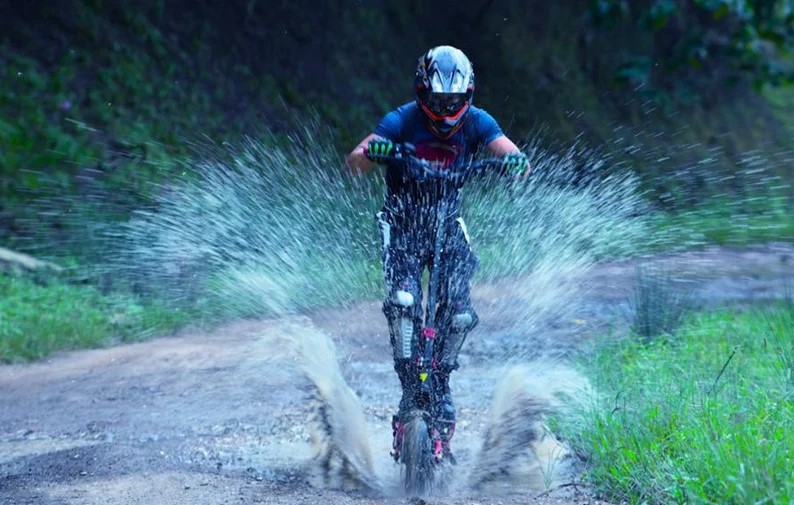 Extendable/Collapsible Motor Scooter Windshield (Srabstein): U.S. Patent No. 10,286,969
Extendable/Collapsible Motor Scooter Windshield (Srabstein): U.S. Patent No. 10,286,969
Motorcycles come with a windshield to protect drivers from rain, snow, road debris, and anything else the driver might confront. However, smaller motor scooters do not come with windshields. As a result, when it starts to rain or snow, the scooter operator is left to either wear rain gear that is bulky and not conducive to safe operation of the scooter, or pull over and waiting for the precipitation to stop. A permanent windshield on a scooter would create resistance, so when it is not raining a windshield on a scooter is just not practical.
This patent creates a solution. It introduces a foldable windshield that consists of a series of curved panels that when folded together sit in front of the handlebars of the scooter and out of the way. When needed, the driver slides the panels up, and as they unfold, they form a windshield directly over the handlebars in front of the driver. When the rain ends, the scooter operator slides the panels back down and out of the way. Since the panels are made of lightweight plastic, they add very little weight to the scooter – but they add a ton of convenience when it rains or snows!
U.S. Patent No. 10,286,969 for an “Extensible frontal roof for a motorcycle” would enable any motor scooter manufacturer, or supplier of motor scooter accessories, to bring to market a practical, all-weather product for scooter owners!
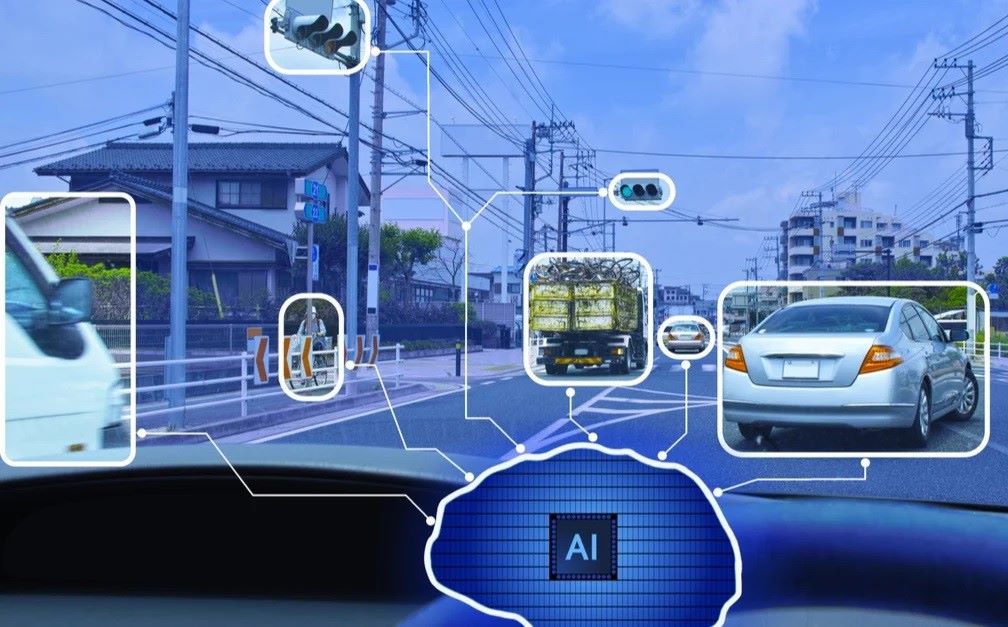 Autonomous Vehicle AI Training (Foresight AI): Four U.S. Patent Portfolio
Autonomous Vehicle AI Training (Foresight AI): Four U.S. Patent Portfolio
The autonomous vehicle (AV) is still in the early stages of development. For autonomous (or self-driving) vehicles to become commonplace and broadly accepted by the driving public, the artificial intelligence (AI) that operates them is going to have to be significantly advanced in terms of performance and capabilities as it faces endless and unpredictable driving behavior out on the road. Just as employees need to be trained to make them more productive and efficient, the AI that powers an autonomous vehicle needs training in a realistic simulation that will make it smarter, more productive, and more efficient. That is exactly what this portfolio does!
This portfolio creates the very first “simulated training academy” for the artificial intelligence that drives an AV. These four patents work together to create high-fidelity 3D environments of traffic conditions in which autonomous vehicle AI learns by interacting with challenging driving scenes in realistic simulation. One patent uses drones to create 3D images of typical scenes – such as an intersection – that an AV will face every day. The second patent creates 3D digital twin images of dynamic environments that autonomous vehicles will encounter, including roads, signs, buildings, sidewalks, and other drivers. The third patent uses light detection and ranging (LIDAR) technology to capture subtle, unpredictable motions that could be risks to the AV’s safety. And the fourth patent ties the three together into machine-learning technology that generates endless variations of challenging driving scenarios that helps autonomous vehicle AI learn more than driving millions of miles on the road.
Patent Portfolio
- U.S. Patent No. 10,970,924: Reconstruction of a scene from a moving camera
- U.S. Patent No. 11,094,112: Intelligent capturing of a dynamic physical environment
- U.S. Patent No. 11,430,145: Identification of local motions in point cloud data
- U.S. Patent No. 11,554,785: Driving scenario machine learning network and driving environment simulation
This portfolio will enable an autonomous vehicle OEM, first tier supplier, or autonomous vehicle company, as well as suppliers of AV electronics, AV simulation, and AV software to take autonomous vehicle artificial intelligence to the next level!
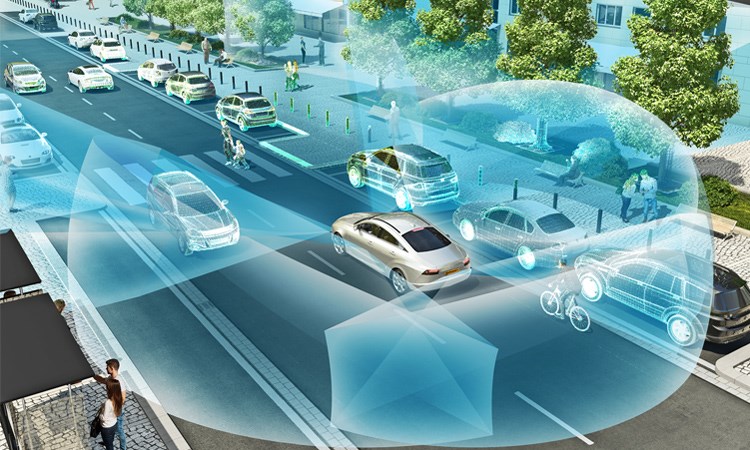 Next-Generation Control of Autonomous Vehicles (Massive Analytic): International Patent Portfolio
Next-Generation Control of Autonomous Vehicles (Massive Analytic): International Patent Portfolio
Autonomous vehicles (Avs) vehicles are no longer science fiction. There are a dozen or so autonomous vehicles on the market, there are thousands of self-driving vehicles on the road, and every car and truck manufacturer has plans to introduce autonomous vehicles. However, the current generation of self-driving vehicles has a serious deficiency. They lack the ability to use inferential thinking to communicate in real time with the rapidly changing environment around them.
This portfolio covers Artificial Intelligence that enables a partially or fully self-driving vehicle to both see and understand the vehicle's surroundings as accurately as human beings can. This portfolio creates an Advanced Driver Assistance System (ADAS) that provides Artificial Precognition using Adaptive Cognized Control (APACC). In-vehicle cameras, sensors, ADAS, LIDAR and DSRC generate specific real-time vehicular data which is combined with actuators, control units and integrated software to enable the vehicle to monitor and respond to its surroundings. Additionally, three-dimensional geometry is computed for situations in front of the vehicle in real time from the sensory inputs. This three-dimensional geometry is combined in real-time with driver behavior, environmental maps (including weather, road conditions and traffic), and images stored in a high-performance computing (HPC) data center.
APACC uses complex algorithms and provides a significant level of inferential thinking and real-time communication. With sensory inputs and three-dimensional geometry generated for real-time situations, APACC allows “cognizing” of the vehicle's surroundings providing a “perception” of the external environment much as humans do. APACC – by its use of a combination of three-dimensional geometry with driver behavior in different situations – simulates the way humans use a combination of stored memories and sensory input to interpret events as they occur and anticipate likely scenarios.
Patent Portfolio
- U.S. Patent No. 9,645,576: Apparatus for controlling a land vehicle which is self-driving or partially self-driving
- European Patent 2976240: Apparatus for controlling a land vehicle which is self-driving or partially self-driving
- Chinese Patent 105189237: Device for controlling an automatic or partially automatic driving a land vehicle
- Japanese Patent 2016520464: Apparatus for controlling a land vehicle for self-operated self-operation or partial
- Korean Patent 2015013825: Apparatus for controlling a land vehicle which is self-driving or partially self-driving
- Israel Patent 41688: Apparatus for controlling a land vehicle which is self-driving or partially self-driving
The patents in this portfolio would enable any current supplier of autonomous vehicles, or any company developing autonomous vehicles, to take its technology to the next level and provide superior driving control, safety and responsiveness. The owner of the portfolio has developed four of the five computer programs needed to bring this product to market!
 Increased Tire Safety (Levin): U.S. Patent No. 11,328,403
Increased Tire Safety (Levin): U.S. Patent No. 11,328,403
There are over 10,000 auto accidents a year in the U.S. – resulting in over 500 fatalities – that were the result of tire-related crashes and blow-outs. Most of the newer autos on the road have a tire air pressure monitor that notifies the driver when a tire has low air pressure, but there is currently NO monitoring system for detecting defects in the treads, sidewall damage, and tread wear. This patent addresses that need.
It covers technology for an autonomous vehicle tire imaging and inspection system that monitors and reports the status of the vehicle’s inner and outer tire sidewalls as well as tire tread wear, tread depth, tire recall alerts, tire aging, and tread defects. This data can be recorded in memory, transmitted to an onboard diagnostics unit, displayed on the dashboard of the vehicle, and transmitted to a central station. It can be configured so both autonomous and non-autonomous vehicles may not be put into service until they pass a tire safety inspection.
U.S. Patent No. 11,328,403 for an “Apparatus and method for onboard stereoscopic inspection of vehicle tires” would be a critical acquisition for a car or truck manufacturer seeking to offer its customer base a new level of safety on the vehicles it sells, or for a company in the automotive aftermarket to offer a new and unique safety accessory. Such a product would be of special interest to operators of fleets that need to better monitor the condition of their vehicles as well as automotive insurance providers.
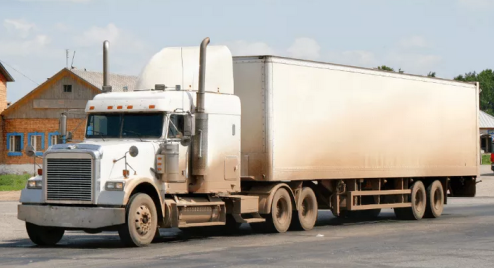 Portable Tractor-Trailer Washing System (Saint-Jean): U.S. Patent Application 20220000255
Portable Tractor-Trailer Washing System (Saint-Jean): U.S. Patent Application 20220000255
There is a network of truck wash stations across the U.S. where tractor trailers are washed. Since these trucks spend most of their time on the road, they get pretty dirty, so they need to be washed on a regular basis. Some of these truck wash stations are at truck stops while others are standalone businesses. It costs from $50 to around $85 to have a tractor-trailer rig washed. It is a cost of doing business, especially if the company’s name is emblazoned across the trailer. No company wants its name on a dirty truck. Large fleet owners rarely have an in-house truck wash station because it just does not make sense economically and it uses up valuable space. Individual truck owners, as well as fleets of all sizes, go to truck wash stations to have their trucks washed.
This patent creates an affordable option – a portable system for washing any type of truck or truck-and-trailer combination. The invention covered by this patent consists of one or two vertical brushes that clean the sides of the truck plus an optional horizontal brush that cleans the top, giving the user several configuration options. The entire assembly is mounted on wheels that carry it from one end down the full length of the truck. It completely and effectively cleans any tractor-trailer rig without having to take the rig to a truck wash station and – as is often the case – wait in line. When not in use, it uses up very little space, so any owner of a fleet of trucks of any size can use it to wash its trucks between runs. A truck cleaner based on this patent will save labor, reducing manpower costs for the fleet operator. Additionally, the technology covered by this patent eliminates the need for the harsh chemicals that are often used to clean vehicles, reducing damage to the painted surfaces of the truck and eliminating the need to recover chemically tainted water.
U.S. Patent Application 20220000255 for a “Mobile trailer-cleaning system” would be a critical acquisition for any manufacturer of truck washing equipment. The configuration created from the patent can be used to create a portable track washing system that can be purchased and used by a truck fleet owner to wash its own trucks, or it could be used to create a truck washing business that goes from fleet to fleet providing on-site truck washing services.
 Smart Traffic Light Network (Cooper): U.S. Patent No. 11,164,453 and Continuation
Smart Traffic Light Network (Cooper): U.S. Patent No. 11,164,453 and Continuation
One of the few benefits of the recent pandemic was less traffic on roads and city streets. But now that the pandemic is over, the streets are again crowded and slow traffic and traffic jams are an unpleasant reality. Some cities have traffic lights that are timed so if a driver is driving at a certain speed, and he or she catches one green light, and he maintains that speed, he will catch a series of green lights – until traffic builds up and he is out of sync and catching every red light. In addition to the inconvenience and the wear and tear on the vehicles, imagine all the gas that is being burned by those vehicles while they sit idling and idling and idling at red lights. And all that carbon monoxide that is being pumped into the air!
This patent family addresses the urban traffic challenge head on. Using cameras, radar, and sensors – and applying real-time data to historic traffic volume – this technology controls the traffic lights by keeping as many signals green for as long as is practical to keep traffic moving based on the traffic flow. Each traffic light has its own controller that communicates with the other traffic light controllers to create a smart network of traffic lights.
U.S. Patent No. 11,164,453 and U.S. Patent Application 20220068128 for a “Traffic signal control system and application therefor” would enable any manufacturer of traffic signals to take its product line to a new level of performance and offer a truly next-generation of smart traffic signals that are affordable enough for any municipality.
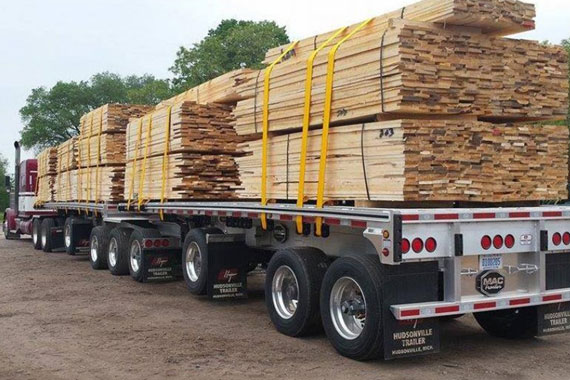 Safer Flatbed Cargo Hauling (Seguin): U.S. Patent No. RE48,070 and Canadian Patent 3045837
Safer Flatbed Cargo Hauling (Seguin): U.S. Patent No. RE48,070 and Canadian Patent 3045837
Accidents and injuries – even deaths – are caused when cargo slips off a heavy-load flatbed trailer. Most flatbed trailers have pockets along the edge, and pins are dropped into these pockets to create anchoring points for strapping down cargo. The problem is that if a pin pops out of place during transit, it loosens the straps holding the cargo in place, and the results can be disastrous – even deadly. Also, on an empty flatbed trailer, pins can bounce out of their pockets, fall into the road surface, and cause damage to other vehicles – even accidents and serious injuries. Enclosed heavy-haul trailers use the same drop-in pins, and if one of them comes loose, the cargo can shift inside the trailer, causing damage to the cargo and, possibly, causing an accident as the load in the trailer shifts, throwing the truck off balance. With the critical importance that truck transport of goods has to the North American economy, there has to be a safer way of tying down cargo on flatbed trailers.
There is. This portfolio creates a system of mechanically actuated pins that rise up along the outer edges of a heavy-haul flatbed trailer and the decks of heavy trucks to create far more secure anchor points for strapping down cargo. These pins can be actuated using air or hydraulics to lift and lower them. These actuated pins are permanently attached to the trailer or truck bed, and they are raised when needed, and lowered down into the floor when not needed. They cannot “pop” out either under a load or when the trailer or cargo bay is empty.
This portfolio includes U.S. Patent No. RE48,070 for a “System for containing a load on an open bed” (which is a re-issue of U.S. Patent No. 9,527,422 when an additional Independent Claim was added to the original patent) and Canadian Patent 3045837 for a “Movable apparatus for wheeled bed.” These patents would be a strategic acquisition for any trailer or cargo bay manufacturer looking for a value-added competitive advantage to offer its customer base. The technology covered by this patent could also be used to retro-fit trailers already in use. The technology has applications for hauling not just commercial cargo, but also for the military which has to haul heavy equipment – often over unfriendly terrain.
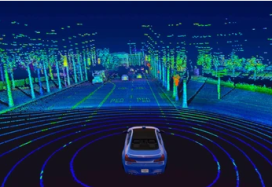 More Effective Doppler LIDAR (Jin): One U.S. Patent, Five U.S. Patent Applications, and Two PCT Patent Applications
More Effective Doppler LIDAR (Jin): One U.S. Patent, Five U.S. Patent Applications, and Two PCT Patent Applications
We’ve all been in a room in which so many people are talking that you cannot have a conversation with the person sitting right next to you. Now imagine a highway in the not-too-distant future in which automobiles – both human-driven and autonomous – are using Doppler LIDAR and radar to detect objects and other vehicles. And many of those vehicles are using the same frequency. While the human ear cannot hear it, there’s a lot of “noise” out there making it difficult for all those Doppler LIDAR and radar systems to work efficiently. This interference among various systems causes a low signal-to-noise and interference ratio, and that can result in misdetections, false detections, and ghost targets.
This portfolio addresses exactly that issue. The technology covered by this portfolio enables Doppler group sensor devices – radar, LIDAR, and sonar – to be detected without interfering with each other on the same frequency. Under this technology, they work together using shared frequencies without interfering with one another, without sacrificing performance, and with very little increase in costs. This is achievable without having to build higher layer protocols in the vehicle’s LIDAR system. The technology does not rely on traditional interference mitigation methods (time division, frequency division, code division, etc.), but uses an opposite method, taking advantage of the special properties of continuous-wave (CW) and frequency-modulated continuous-wave (FMCW) signals. The ‘565 Patent Application covers radar and sonar, while the ‘579 Patent Application addresses LIDAR.
Patent Application Portfolio
- U.S. Patent No. 11,493,623: Doppler group radar, group sonar and group sensor
- U.S. Patent Application 20210302579: Group doppler sensor over optical carrier
- U.S. Patent Application 20220011430: Lidar sensor on chip with doppler-sensing pixels
- U.S. Patent Application 20220011431: Camera sensor for lidar with doppler-sensing pixels
- U.S. Patent Application 20220011438: Multi-domain optical sensor chip and apparatus
- U.S. Patent Application 20220107404: System and method of detecting vehicles beyond a view-blocking vehicle
- PCT Patent Application 2021198759: System and method of detecting vehicles beyond a view-blocking vehicle
- PCT Patent Application 2022008989: Multi-domain optical sensor
The ’430 Patent Application is an extension of the pixel-based LiDAR technology covered by the first two patent filings. It addresses the transfer of pixel data NOT sequentially (line by line and pixel by pixel), but based on the priority of the objects. This is significant in time-critical and consequence-critical applications such as autonomous vehicles. More urgent pixels are transferred to the processor faster so reaction time is shorter.
The ‘431 Patent Application discloses an FMCW LiDAR receiver that no longer needs any type of scanning – neither mechanical nor electronic/photonic scanning (MEMS scanning, optical phase array, and Rotman lens) – and offers 4D LiDAR in an architecture similar to a digital camera. The pixels on a LiDAR receiver chip directly sense Doppler information in modulated light signals to detect distance, velocity, and direction of objects. This "camera-lized" LiDAR-on-chip structure creates LiDAR that is lower cost, but it offers faster and more accurate detection, including omnidirectional sensing chips that form omnidirectional LiDAR without any mechanical moving parts.
The ’438 Patent Application takes the two previous inventions to the next level by disclosing a local oscillator pumped photo-detector – a semiconductor that combines light sensing and LO mixing in one device to accomplish light sensing and Doppler detection of modulated light signals. It also includes a combined LiDAR-and-camera sensor that senses eight domains of object information in one chip: distance, horizontal, vertical, velocity, red, green, blue, and light intensity. The combined sensor achieves 8D joint detection without the need for sensor fusion between LiDAR and the camera, and it transfers eight-domain pixel data based on urgency and consequence priorities.
This portfolio will enable any manufacturer of radar, LIDAR, or sonar equipment – or a vehicle manufacturer – to offer the next generation of Doppler technology, leap-frogging all of its competition. The PCT Patent Applications enable the acquirer of the U.S. Patents to file for additional national patents anywhere in the world.
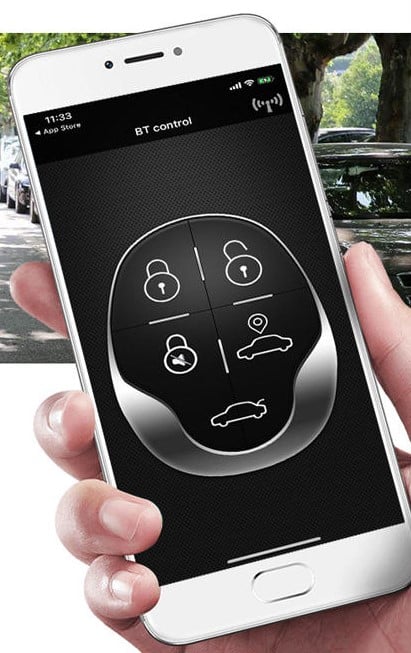 Never Get Locked Out Again (United Wellness): Two-Patent Portfolio
Never Get Locked Out Again (United Wellness): Two-Patent Portfolio
Conventional keys are going the way of pay phones and video rental stores. Multiple technologies are competing to offer smarter lock-and-key technology. This portfolio addresses that technology from two angles – first with an improved button that you use to activate a key, and second with wireless or Bluetooth connectivity that does not require an app for your smartphone.
The first patent covers what is essentially a button-pressing kit. It has a fixed plate that is attached to a transmitting device with a depressible button on its exterior. It uses a mechanical button that activates an electrical switch when depressed. There is a resilient ball between the button and an axially rotating plate. Rotation in one direction depresses the button, and a motor can cause this axial rotation. If the pressure on the button is too great, it can be considered depressed and the motor will rotate in the other direction, sending the movable plate back to its starting point. To depress the button, specific input – such as on a tactile sensor – may be needed. The resilient ball can actually stick to the button via an adhesive connection, thus the term “sticky ball” in the patent title.
The second patent addresses the challenge created by all of the remote-control devices in use today – devices for televisions, garage doors, home and office doors, gate locks, automobiles, window shades and drapes, and many other items. This patent uses the same transmission devices provided by the manufacturer, but each device uses a mechanical push button (from the first patent) that is pressed to operate the transmitter. It can be tapped, vibrated, or communicated with via a second, distinct wireless transmission. The user can use his or her smartphone or another hand-held wireless device to send a code that prompts mechanical movement that opens or unlocks the desired device or equipment. The wireless transmission can be a password via a short-range wireless connection between the wireless transmission device and the housing that contains the button.
This portfolio includes U.S. Patent Nos. 9,798,349 for a “Button pressing device with moving plate and sticky ball” and U.S. Patent No. 10,042,381 for a “Double wireless receipt and transmission with mechanical movement causing second wireless transmission.” This portfolio would be a strategic acquisition for any business in the Smart Home/Smart Office segment, a company currently making conventional key-and-lock products or remote locks such as garage-door openers, or a business looking to enter the Smart Home/Smart office business segment with next-generation technology.
Canopy for Utility and Flatbed Trailers (Jaschke): U.S. Patent No. 10,639,979
When a person or business needs to buy a trailer to haul vehicles – tractors, mowers, motorcycles, collector cars, etc. – or equipment, there are really two choices: An open or a covered trailer. Both have advantages. An open trailer is less expensive and it provides 360-degree access to the cargo, but it often requires attaching tarps and bungee cords to protect the cargo. A covered trailer is more expensive, but it provides protection to the cargo from rain, snow, road debris, prying eyes, and the elements. Covered trailers are NOT aerodynamic, so they create considerable drag that is reflected in higher fuel costs. They are also much heavier with the weight of the trailer itself eating up much of the available axle load and reducing the amount of weight that can be loaded onto the trailer. So what is the better choice for the person or business that is buying a trailer? Open or enclosed? Sometimes the result is having to purchase both!
There is actually a third choice. The buyer can select an open trailer, but also purchase a pop-up canopy that can be used to cover and protect the cargo when needed, resulting in a best-of-both-worlds scenario. This patent covers a durable vinyl canopy that is mounted to the perimeter of an open trailer and permits full access to the trailer and its cargo when the canopy is down. Instead of dealing with tarps and rope, the canopy can be lifted up and put in place to cover the cargo in just a few minutes. The canopy provides protection to the vehicle, equipment, or other cargo from the weather, road debris, and other elements. A flatbed trailer with the canopy up is far lighter and more aerodynamic than a box trailer, and the lightweight canopy reduces fuel costs and increases payload capacity.
U.S. Patent No. 10,639,979 for a “Retractable canopy assembly” will enable any manufacturer or seller of utility trailers or trailer accessories to offer an affordable and practical solution to the dilemma of whether to buy an open or covered trailer. It also creates an aftermarket product for the millions of flatbed and utility trailers currently in use. Working prototypes of canopy tops based on this patent are available.
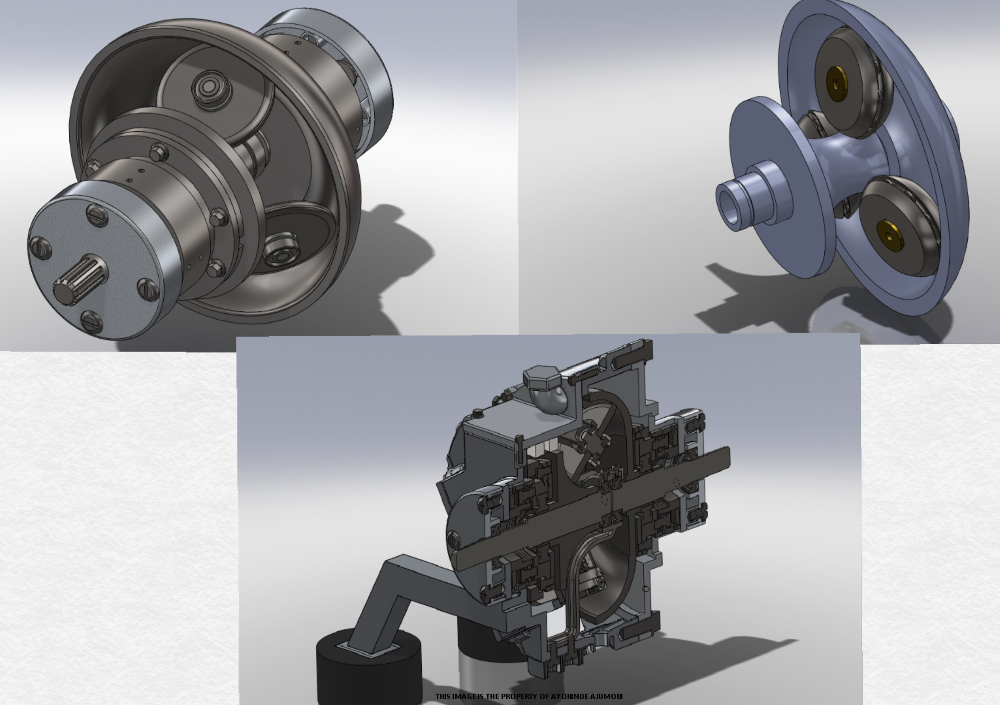 Toroidal Traction Transmission (Supra Lumina): Two U.S. Patents
Toroidal Traction Transmission (Supra Lumina): Two U.S. Patents
One of the key factors to performance, reliability, economy, and durability for a vehicle of any kind is its transmission – the component that delivers power from the engine or motor to drive the wheels. The drive wheels on most of today’s cars and trucks have the same symmetrical input/output wheel arrangement that has been used for decades.
This portfolio takes a different approach, introducing an asymmetric input/output wheel arrangement as well as a unique suspension system for the drive wheels. This portfolio creates a transmission with at least double the velocity ratio and torque multiplication range of conventional transmissions. When used in a passenger vehicle, truck, or bus there is no need to have a seven, eight, nine, or ten-speed transmission because the transmission created by this portfolio adjusts the gear ratios as needed in a step-less and continuous manner with a much wider ratio spread. Additionally, fewer parts are required to build this transmission!
Applications for a Toroidal Traction Transmission include gas, diesel, and electric automobiles, trucks, and busses as well as aerospace, marine, construction, and industrial vehicles. The power source – an electric motor, for example – can keep running at its most efficient speed or speed range while the output shaft speed can be varied in a continuous and infinite manner as needed. This revolutionary transmission offers superior performance and fuel economy. And because the design requires fewer parts, the transmission is lighter and up to 25% less expensive to build than conventional transmissions!
U.S. Patent Nos. 10,502,289 and 11,519,482 for an “Asymmetric toroidal transmission system” would enable any manufacturer to leapfrog the technology of all of its competitors and introduce what is truly the next generation of transmissions.
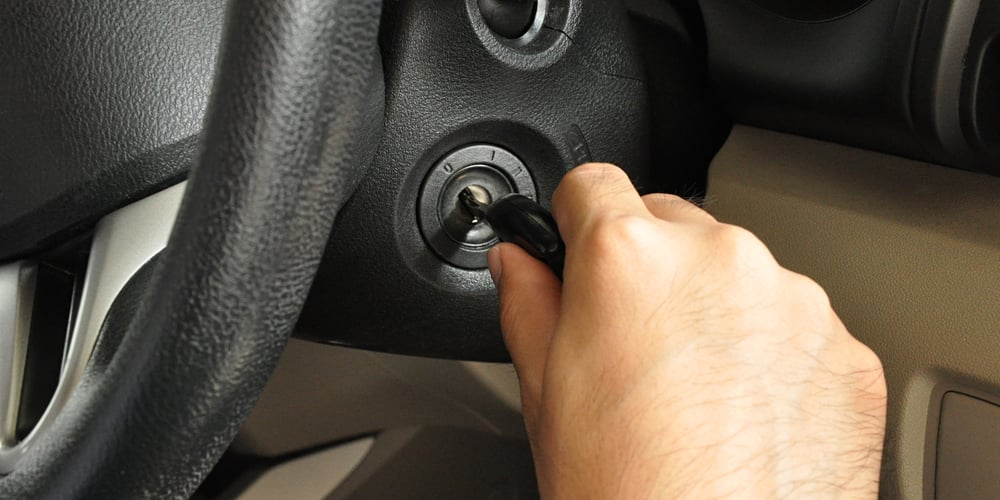 Auto Ignition Key Security (Farah): U.S. Patent and European Patent Application
Auto Ignition Key Security (Farah): U.S. Patent and European Patent Application
The easiest way to steal a car, truck, or other type of vehicle is to simply take the key, start it, and drive off. And let’s face it, car and truck keys are laying all over the place – hanging on a hook, in a coat pocket or purse, on a desktop, or in a dozen other unprotected locations. What is needed is a way for a vehicle owner to have an ignition key that he or she can grab when needed, but that someone else – from a co-worker to a customer to a stranger to a teenager to a thief – cannot also pick up and use to drive the car away, to either steal it or just “borrow” it!
This patent addresses exactly that need. It creates a smart fob that holds the key. The fob records the owner’s fingerprint and a security code. When the owner (or an authorized user) picks up the fob, it reads the fingerprint and the owner enters the security code. An LED indicates that the correct security code has been entered, and the cover of the fob pops open and releases the ignition key! If the owner needs to give a key to a third person – a parking lot attendant or auto repair facility, for example – he or she either uses a spare key or pops the key out of the fob, then replaces it when the car is returned. Or the owner can give temporary access to a third person by temporarily adding that person’s fingerprint to the device.
U.S. Patent No. 10,625,712 and European Patent Application 3621043 for a “Method and apparatus for securely accessing an automobile ignition key” would be an excellent acquisition for an auto aftermarket supplier looking to offer a totally new product, creating a new market segment in the automotive accessories sector. There are many cars, trucks, and other vehicles that use conventional ignition keys, and there are tens of millions of older cars and trucks on the road that use ignition keys, so the market for a product based on this patent is huge!
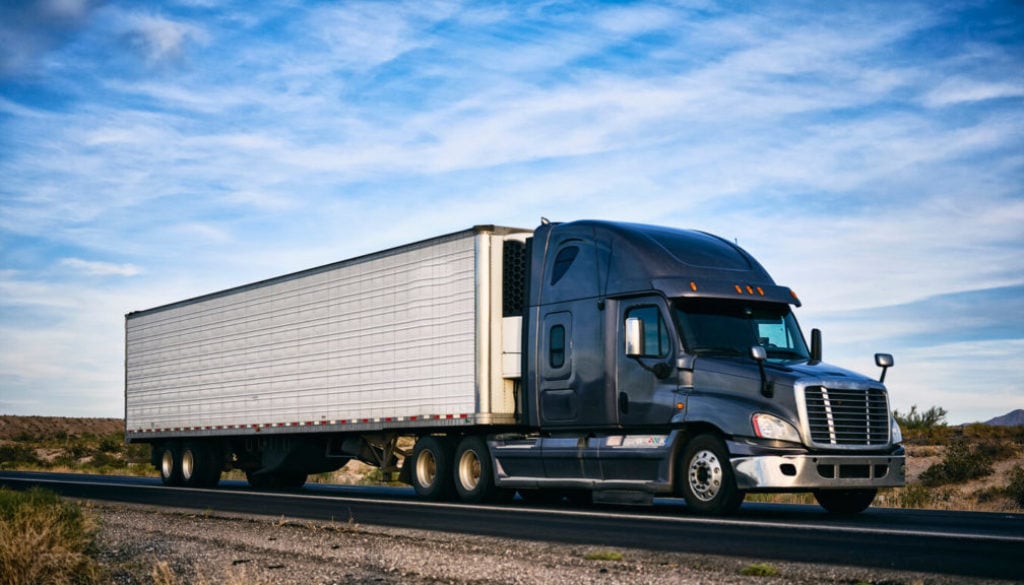 Reduction of Drag on Trailers (Mazyan): U.S. Patent No. 8,746,779
Reduction of Drag on Trailers (Mazyan): U.S. Patent No. 8,746,779
Drag is a drag. As a truck-and-trailer moves down the road, it has to push a lot of air out of the way. It is called “drag” and is defined as “the longitudinal retarding force exerted by air or other fluid surrounding a moving object.” The more drag, the harder the vehicle has to push to make its way through the air, and more drag means higher fuel costs. Any reduction in drag results in lower fuel costs. Most of the trucks that pull trailers include a baffle mounted on the top of the cab that pushes air up and over the trailer, and this significantly reduces drag. But what about that huge box moving down the road? The trailer?
This patent addresses drag reduction for trailers. It uses three wings – one on the front bottom of the trailer and two on the rear top and rear bottom of the trailer – that redirect air coming at the trailer and moving across the top and bottom of the trailer. Redirecting the air coming off the top and bottom of the trailer against the rear of the trailer reduces the vacuum that would otherwise exist across the back of the trailer, increasing drag and fuel usage. The wings replace that vacuum with higher pressure that actually pushes the retarding force caused by drag. Therefore, the air passing over and under the trailer is redirected to ease the vehicle’s forward motion, reducing drag and fuel costs! The invention was test in a wind tunnel, and it showed a reduction of up to 2.3%. And that also results in a small carbon footprint for vehicles equipped with the invention.
U.S. Patent No. 8,746,779 for a “Tri-wing system for reduction of the aerodynamic drag of ground vehicles” would be a critical acquisition for any trailer manufacturer or truck aftermarket supplier ready to introduce an energy-saving accessory for trucking companies.
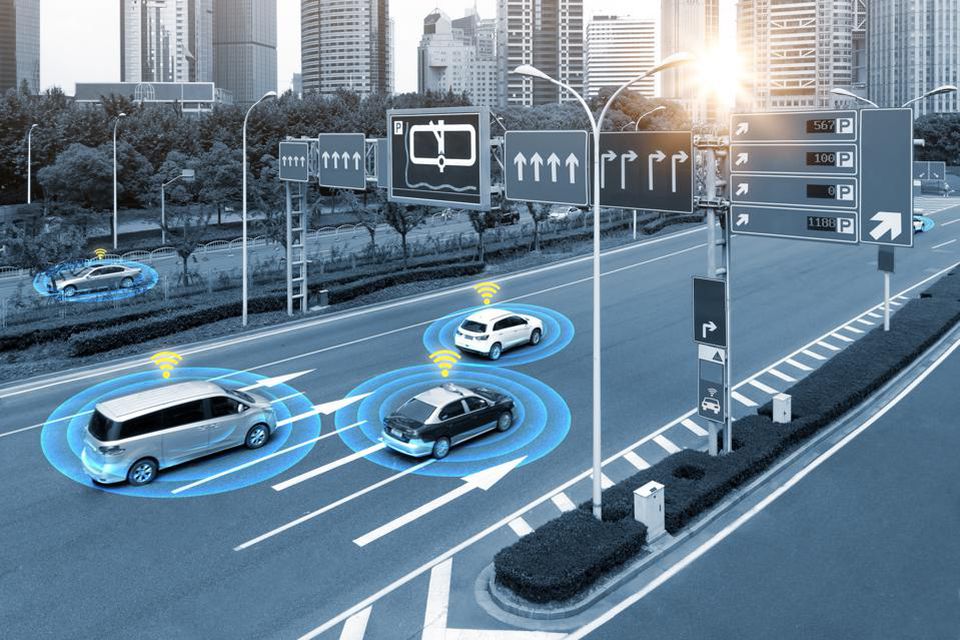
 Smarter, More Efficient Autonomous Vehicles (Ramanujam): Four U.S. Patents and Patent Application
Smarter, More Efficient Autonomous Vehicles (Ramanujam): Four U.S. Patents and Patent Application
The autonomous vehicle (AV) is not the next big thing. The autonomous vehicle is here…and there are thousands of them on the road today. One of the objectives of autonomous vehicles is to offer dramatically improved efficiencies, providing the owner/operator of an AV with a greater return on investment. This comprehensive portfolio addresses several aspects of what will unquestionably be the next generation of autonomous vehicle technology.
U.S. Patent No. 9,805,519 addresses performing services on an autonomous vehicle. When the AV detects that service needs to be performed on the vehicle, it selects a service center to perform the service and generates commands to drive to the service center. One of the objectives for autonomous vehicles is that they will boost productivity when time that would be spent idle can be used for productive purposes such as routine maintenance. This is a foundational patent with over 200 Forward Citations.
U.S. Patent No. 9,805,605 covers the operation of a fleet of autonomous vehicles in a taxi service. When an AV is sent to pick up a passenger, it may select a route to travel to the passenger location and provide the commands necessary to arrive at the pick-up location. The autonomous vehicle notifies the dispatcher once the taxi service has been completed and the vehicle is available, and the AV will provide commands to drive to a default location to wait for instructions from the taxi service system to pick up the next passenger. This is also a foundational patent with over 200 Forward Citations.
U.S. Patent No. 10,023,231 relates to parking an autonomous vehicle. After arriving at a preselected location, the autonomous vehicle may be given instructions to park in a currently available parking space that is selected based on a proximity and priority level for that locale. The AV confirms that it is parked and provides the location. The vehicle can then be instructed to drive from the parking spot to a preselected location to wait for a passenger. If the passenger does not arrive within a defined period of time, the AV re-parks itself. This is a newer patent, but it already has over 150 Forward Citations.
U.S. Patent No. 10,220,705 deals with sharing of an autonomous vehicle by multiple users. An AV receives a request to pick up and drop off a passenger. The autonomous vehicle may add a second, concurrent task by picking up and dropping off a second passenger, but only if doing so does not conflict with picking up and delivering the first passenger. The goal of using autonomous vehicles to increase efficiencies can be significantly achieved through the type of ride-sharing covered by this patent. Also a relatively new patent, it already has over 50 Forward Citations.
U.S. Patent Application 20190250616 also addresses performing services on an autonomous vehicle. The AV determines that service is needed, so it identifies a service facility that is within the current range of the vehicle and is in proximity to the route to be taken by the autonomous vehicle. The vehicle provides commands to divert itself from the original route and drive to the service facility and have the required service performed. This technology applies to the self-driving trucks – electric, gas, and diesel – that are revolutionizing the trucking industry as it will significantly increase efficiency by using down-time for maintenance and service.
Patent Portfolio
- U.S. Patent No. 9,805,519: Performing services on autonomous vehicles
- U.S. Patent No. 9,805,605: Using autonomous vehicles in a taxi service
- U.S. Patent No. 10,023,231: Parking autonomous vehicles
- U.S. Patent No. 10,220,705: Sharing autonomous vehicles
- U.S. Patent Application 20190250616: Performing a service on an autonomous vehicle en route to a destination
This portfolio will provide any manufacturer or owner/operator of autonomous vehicles with the ability to dramatically increase the efficiency of the AVs it sells or operates. Available upon request are five Claim Charts for one patent in the portfolio.
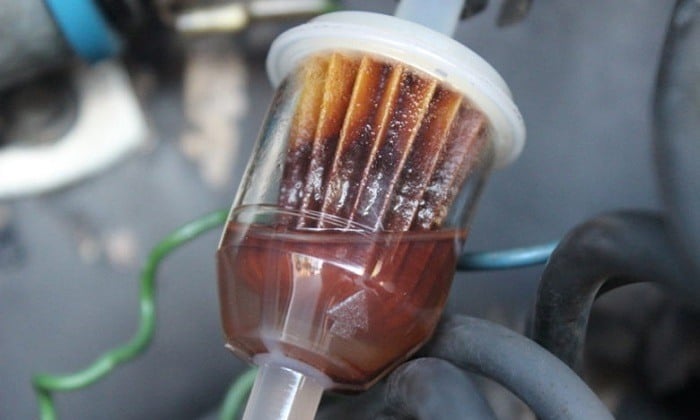 Advanced Fuel Filter (Koch): U.S. Patent No. 10,596,899
Advanced Fuel Filter (Koch): U.S. Patent No. 10,596,899
Dirty fuel – be it gasoline, diesel or aviation fuel – is a ton of trouble. The vehicle either has to be towed to a repair facility, or – in the case of a stationary engine or construction equipment – a mechanic or repair technician has to travel to the location of the disabled equipment to make repairs. Downtime, expense and aggravation. The primary shortcoming of the current generation of fuel filters is where they are located. Virtually are all located in the engine compartment just before where the fuel enters the engine. That means that dirty fuel can build up in the fuel intake tube, the fuel tank, and the fuel line from the fuel tank to the fuel filter next to the engine.
This patent takes a totally different approach. It filters the fuel as it enters the vehicle, before it even makes it to the fuel tank. This patent describes a fuel filter that is attached to the intake tube directly under the fuel cap. Any dirt, sediment, debris, or other impurities are caught as they enter the vehicle and never make it to the fuel tank or the fuel line. For vehicles and equipment that work in hostile environments – construction equipment, farm machinery, generators, irrigation systems, military vehicles, mining and quarry equipment, and aircraft are just a few – any contaminants in the fuel are filtered out as the fuel enters the vehicle. The filter can be easily popped out – no need for a mechanic – cleaned as needed, and re-inserted! In addition to avoiding dirty-fuel-based repairs, cleaner fuel means longer engine life.
U.S. Patent No. 10,596,899 for a “Fuel tank filter assembly and fuel system” would be a critical acquisition for any manufacturer of engines or machinery that is used in dirty, harsh environments. It can be a value-added feature that differentiates the product line, or sold as an accessory. The patent is also an excellent acquisition for an automotive or industrial equipment aftermarket supplier seeking to create a new market segment with patent protection through 2038!
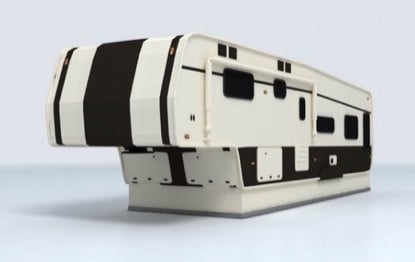 Retractable RV Skirt (Desrochers): U.S. Patent No. 10,000,147
Retractable RV Skirt (Desrochers): U.S. Patent No. 10,000,147
Recreational vehicle owners have had an ongoing problem for years – enclosing the large open space under their travel trailer, fifth wheel or motorhome. Having all that open the space under the vehicle makes the unit more expensive to heat in the winter and more expensive to cool in the summer. And if the RV owner is going to be any place for any period of time, he or she wants to be able to store items like grills, coolers, fishing and hunting gear, lawn furniture, supplies, propane, you-name-it under the RV, but then it becomes very unsightly. Finally, the RV owner does not want cats, dogs, coyotes, raccoons and other wildlife from making a home under the vehicle.
RV owners currently use a combination of methods to enclose the space under their vehicles – from bales of hay to plywood and blue board, or panels that must be attached and stored, and then removed and stored every time they move. This patent fixes all of these issues by creating the first retractable skirt for motorhomes, travel trailers and fifth wheelers. Brackets secure a roll-down skirt to the bottom of the vehicle, and a remote-controlled motor drops down and raises the skirt upon command from the owner. The skirt can be made to match the exterior of the RV so it is a continuation of the unit’s exterior. When the skirt is in the raised position, the owner just drives away. Nothing to pack or unpack.
U.S. Patent No. 10,000,147 for “Retractable recreational vehicle skirting” would be a critical acquisition for any RV manufacturer or after-market RV supplier looking to create – and own – a new market segment in the RV industry.
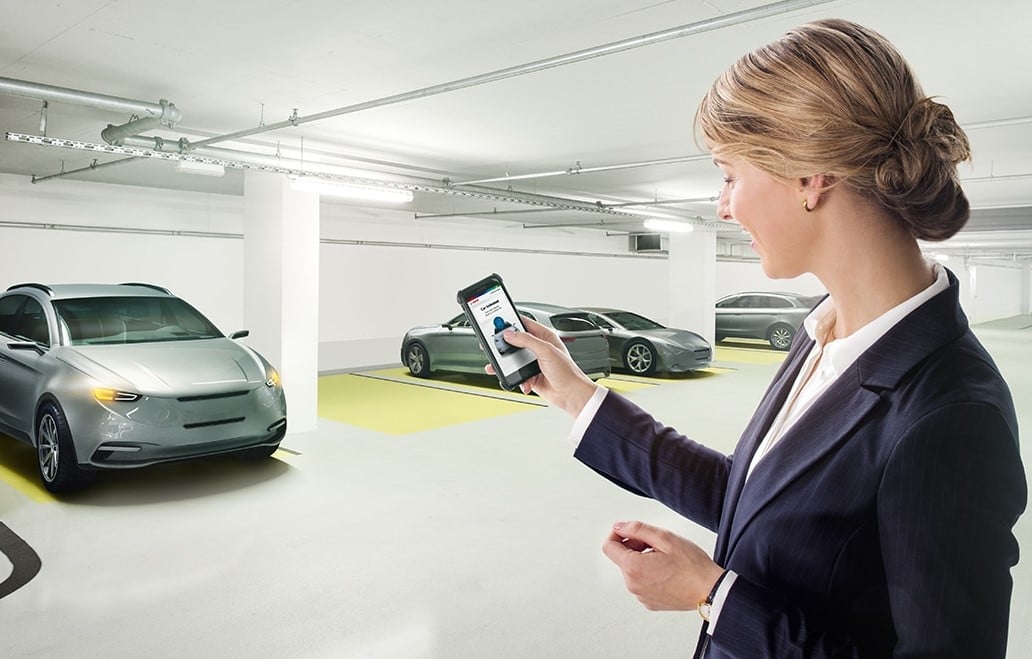 Biometric/Smartphone Vehicle Locking/Unlocking (Ahmad): Two U.S. Patents plus Continuation
Biometric/Smartphone Vehicle Locking/Unlocking (Ahmad): Two U.S. Patents plus Continuation
We’ve all locked ourselves out of our car at one time or another. Whether it is an older car with a conventional key, or a newer car that uses just a fob, we’ve all faced that stomach-churning moment when we realize we do not have the key. Or do not have it with us. Parallel to that is the reality that the smartphone we carry around with us does a lot more than just make and receive phone calls. We can use it to pay bills, facetime with grandma, and monitor the front door to our home. Why not also use our smart phone to unlock our car?
This patent addresses exactly that very logical concept. You ask your smartphone to unlock your car. It asks for biometric authorization such as a fingerprint, and it unlocks the car by communicating with a module attached to the vehicle. The invention can also be used to give access to a vehicle to a friend or co-worker, by share-riding services to confirm that a customer is really a customer, or to control access to autonomous vehicles. Biometrics is a key element because it prevents a bad guy from stealing your smartphone and then using your stolen smartphone to also steal your car! The patented invention uses NFC (near-field communications) so you just need to be near your car such as while you are walking to it in a parking lot or parking garage.
This portfolio includes U.S. Patent Nos. 10,343,650 and 10,604,115 for a “NFC system for unlocking a vehicle via smartphone biometric authentication” plus an open continuation. This property would be a valuable acquisition for a cell phone OEM or service provider, or for an automotive accessories aftermarket supplier, or for an auto company that wants to offer added security and convenience for its customers.
 No-Spray Mud Flaps (Radyk): U.S. Patent No. 10,246,134
No-Spray Mud Flaps (Radyk): U.S. Patent No. 10,246,134
We’ve all been there. We are passing a truck in wet, nasty weather, and the wheels from the truck send up a blinding spray of water, salt, sand, slush and mud, blinding us for several minutes until we finally pass the truck. Heavy truck splash creates a serious driving hazard on multi-lane highways and a critically dangerous situation on narrow, two-lane roads!
The invention covered by this patent addresses exactly that driving hazard by introducing the first new design in mud flaps since we started building the Interstate Highway System. This patent creates a mud flap with openings across its surface. Elbow tubes extend from the exterior surface of the mud flap at each opening and run down the interior surface of the mud flap. Water, snow, slush, ice, sand, salt and other roadway debris are caught by the openings and then flow down the interior surface of the panel where they are collected and redirected through the elbow tubes and flow down to the road surface. The huge spray from the truck’s wheels that blinds motorists is eliminated!
U.S. Patent No. 10,246,134 for a “Truck mud flaps with elbow tubes” would be a critical acquisition for any trailer manufacturer or truck aftermarket supplier looking for a competitive advantage in the marketplace.
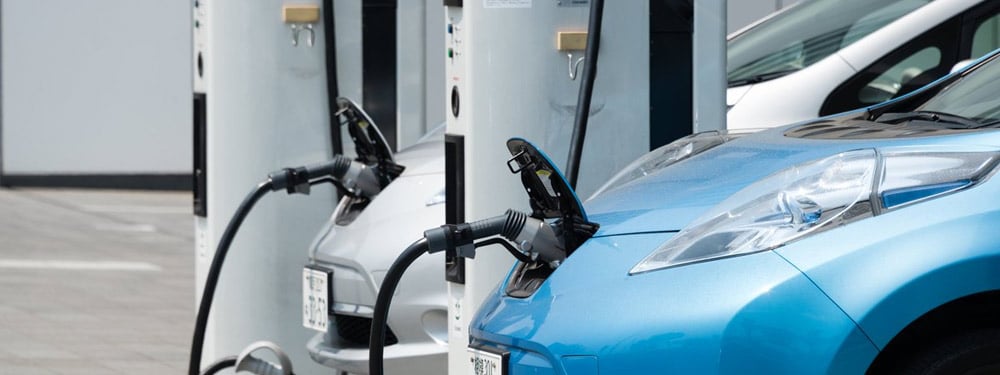 Pop-Up Automated EV Charging Station (Kauffmann): Three U.S. Patents plus U.S. and PCT Patent Applications
Pop-Up Automated EV Charging Station (Kauffmann): Three U.S. Patents plus U.S. and PCT Patent Applications
Electric vehicles have arrived, and along with them a whole new set of challenges. Most EVs are charged at home at night, but increasingly electric vehicles are being charged 24/7 at charging stations that are popping up across the country. The first all-electric “gas station” just opened in Takoma Park, Maryland. One of the challenges facing the EV industry is the best way to charge all these electric vehicles, and how to do it efficiently and safely.
This portfolio presents a comprehensive solution. Rather than charge the vehicle through a port on the side of the vehicle – essentially replacing where the gas cap was with an electrical port – this portfolio re-thinks the entire concept. The EV drives into the charging station, and a robotic arm rises up from the floor and plugs into the bottom of the car to recharge its battery. The configuration is waterproof, so there is no danger and no damage when it rains. And since the driver of the car does not actually touch any part of the charging equipment, it is much safer, dramatically reducing the possibility of injury or death.
The patented invention also creates a whole new level of convenience for EV owners who do not have to get out of their cars during inclement weather. They can stay in the car while it’s charging, or step out of the car to get a cup of coffee, visit the restroom, or just stretch their legs. For the growing number of autonomous vehicles, this invention addresses the question: Who in a driverless vehicle is going to step out of the car and plug in the charging device?
| Patent No. | Title |
|---|---|
| 9,543,769 | Pop up electrical apparatus |
| 9,780,584 | Pop up electrical apparatus with safety system |
| 9,862,284 | Pop up electrical apparatus with wireless charging component for electric vehicles |
| 10,538,172 | Apparatus that automates the connecting process between a primary connector and a secondary connector for charging an electric vehicle |
This portfolio also includes PCT Patent Application 2019010375 for “An apparatus that automates the connecting process between a primary connector and a secondary connector for charging an electric vehicle.” This portfolio would be a strategic acquisition for any company currently building or operating charging stations or any EV manufacturer.
 Tap, Tap, Tap to Control Smart Devices while Driving (Karuza): U.S. Patent No, 9,966,951
Tap, Tap, Tap to Control Smart Devices while Driving (Karuza): U.S. Patent No, 9,966,951
All of the sophisticated electronics and sensors that an automobile driver has to deal with can be overwhelming. And distracting. For example, 20 states have banned the use of cell phones while driving. A key objective in driver safety is reducing driver distraction, and this invention addresses that need head on!
This patent creates a device that communicates with all of an automobile’s sensors and services, as well as any items brought into the car by the driver, such as a smartphone. Rather than search to find the On/Off for a sensor or application, or have to find the phone, the driver simply taps on the touch sensor. One tap for the smartphone. Two taps for the navigation system. Three taps for the back-up camera. The user/driver sets up the system with a set number of taps for each device or application. With less distraction than turning on the AC, the driver can quickly and easily access any device or sensor!
U.S. Patent No. 9,966,951 for a “System for allowing a user to wirelessly manage software applications of a computing device and plurality of vehicles sensors” would be a strategic acquisition for any automobile company or supplier of aftermarket automotive electronics.
 Advanced Driver Assistance Module (ALMAGuide): Two U.S. Patents
Advanced Driver Assistance Module (ALMAGuide): Two U.S. Patents
Today’s navigation systems are great. No pulling over to the side of the road to look at a map, or guessing how far it is to the next turn. Today’s navigation systems can do everything but get you out of the slow lane and into the lane that is moving the fastest. Until now, that is! The invention covered by this portfolio integrates an in-auto, aftermarket or smart-phone-enabled navigation system with data from traffic management centers to guide the driver to the most expeditious route to his or her destination based on current traffic conditions! The invention covered by this portfolio also applies to autonomous vehicles.
| Patent No. | Title |
|---|---|
| 9,053,636 | Management Center Module for Advanced Lane Management Assist for Automated Vehicles and Conventionally Driven Vehicles |
| 9,286,800 | Guidance Assist Vehicle Module |
This portfolio would be a critical acquisition for any automobile or truck OEM, aftermarket navigation product supplier, smart phone manufacturer, or navigation services or cellular services provider.
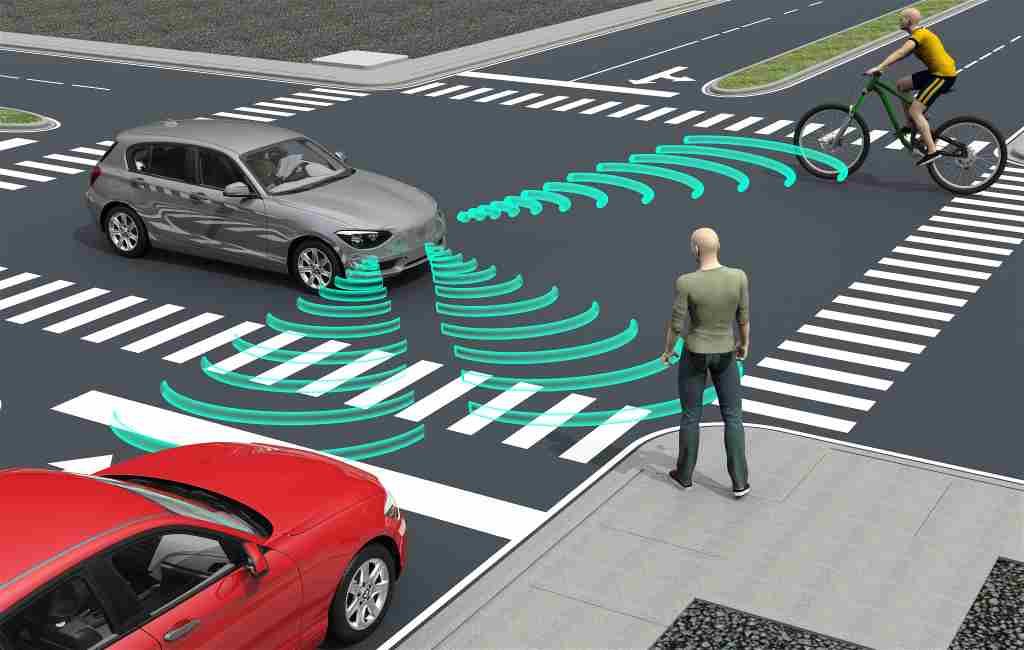 Smarter, Safer Autonomous Vehicles (Ellis): Two U.S. Patents
Smarter, Safer Autonomous Vehicles (Ellis): Two U.S. Patents
You cannot avoid the latest developments in autonomous vehicles. The news covers not just the technology, but autonomous vehicle accidents. Self-driving cars are the first major automotive development since the Model T. The challenge, of course, is making them smarter and safer – safe enough that people will be confident enough to buy them and ride in them.
This portfolio directly addresses the issue of safer self-driving vehicles by incorporating several technologies – Lidar (light imaging detection and ranging), continuous-wave radar, computer-vision deep-learning algorithms, GPS, and intelligent video monitoring and video analysis. This portfolio reveals technology that scans the environment surrounding the vehicle, and uses computer-vision deep-learning algorithms to evaluate the images and – based on the data it collects - predict a vehicle’s behavior. By being responsive to electronic tags, other vehicles and roadside objects, it uses this collective intelligence to make reliable, pre-collision restraint deployment decisions.
The portfolio also includes technology that:
- Enables traffic control light mechanisms to employ artificial intelligence, rendering instantaneous, protective actions when undefined, unplanned danger is detected.
- Uses VCA (video content analysis) to predict specific data, behavior, objects and attitude.
- Monitors emergency vehicles, compares alert signals received and priority algorithms, and yields to such vehicles accordingly.
- Employs coordinated components and entities that observe prioritized vehicle codes and automatically provides data on optimum routing, preempts traffic control lights, and warns pedestrians of advancing prioritized vehicles.
- Uses movement analysis to detect and identify abnormal and alarming situations associated with vehicle traffic, initiate video transmission and recording, and trigger appropriate alarms, functions and vehicle behavior.
- Communicates with other similarly enabled driverless vehicles so it is aware of road conditions beyond the horizon.
U.S. Patent Nos. 10,147,320 and 10,235,877 for a “Self Driving Vehicles Safety System” will dramatically improve highway safety as more and more autonomous vehicles come into use. This portfolio will be a critical acquisition for any vehicle manufacturer that plans to be a major player in the autonomous vehicle segment.
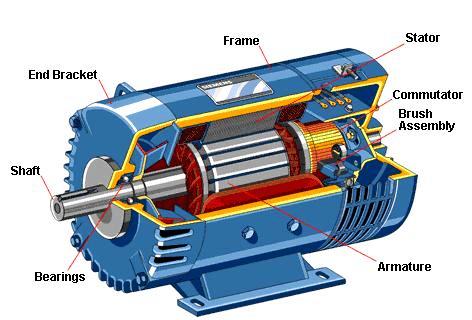 Energy Efficient, High-Torque Electric Motor (Morris): U.S. Patent No. 10,199,914 plus CIP
Energy Efficient, High-Torque Electric Motor (Morris): U.S. Patent No. 10,199,914 plus CIP
Electric vehicle manufacturers are doing everything possible to increase the distance their vehicles can go on a charge. In addition to increasing battery capacity, the other strategy to accomplish this is to use electric motors that are more efficient. This intriguing patent addresses exactly that. In fact, it is the first new concept in electric motors in decades!
This patented electronic motor features a shaft that has a larger diameter and shortened length. It essentially “pancakes” the motor. It is a high-torque motor that operates more efficiently by taking advantage of repelling and attracting forces from magnetic fields. It uses lifting electromagnets for improved efficiency, and it includes a fail-safe feature that enables the motor to continue to operate even when some components have failed! The inventor has developed a working prototype that can be viewed by any parties interested in the portfolio.
U.S. Patent No. 10,199,914 for “Closed loop leveraging electromagnetic motor” has applications in electric vehicles as well as any products currently using electric motors – such as water pumping stations as well as construction and agricultural equipment – where increased efficiency is needed. The granted U.S. Patent comes with a Continuation-in-Part Application that enables the operator to use an app to control and monitor the motor’s parameters. This portfolio would be a critical acquisition for any electric vehicle company or manufacturer of equipment that use electric motors!
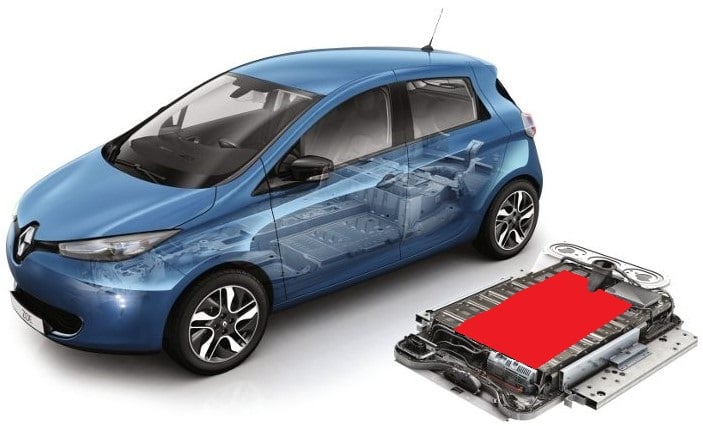 Instant Battery Recharge for Electric Vehicles (Jasper): International Patent Portfolio
Instant Battery Recharge for Electric Vehicles (Jasper): International Patent Portfolio
One of the critical limitations facing the electric vehicle (EV) industry is range. A gasoline or diesel-powered car or truck has unlimited range. When the fuel runs low, the driver pulls into a gas station and fills up the tank in minutes. While electric vehicles have many advantages, you cannot just pull into a station and fill up the tank. Owners of electric vehicles have to remember to plug them in at night so they are fully charged in the morning, and the owner of an EV cannot travel over half of the range of a full charge if he or she is going to make it back home. There is a growing network of charging stations for electric vehicles, but a charge takes time – the one asset that none of us has enough of!
This portfolio creates a solution to the recharge challenge facing electric vehicle owners. It gives every electric vehicle owner unlimited range by establishing EV battery-swap stations. Rather than plug the EV into a re-charging unit and wait for the battery to recharge, the owner simply drives into a battery-swap station. He or she pays for a new, fully charged battery. As the vehicle moves through the station, the old, low-charge battery slides out while a new, fully charged battery slides in. That’s it! And off the driver goes with a fully charged battery. In fact, the technology covered by this portfolio makes “filling the tank” on an electric vehicle easier and faster than filling the tank on a conventional gasoline or diesel automobile! And this patented technology gives every EV the same unlimited range that fossil fuel-powered vehicles have.
Patent Portfolio:
U.S. Patent No. 8,973,254: System and method for rapid battery exchange in electric vehicles
U.S. Patent No. 9,142,866: Method for rapid battery exchange in electric vehicles
U.S. Patent No. 9,637,093: System and method for rapid battery exchange in electric vehicles
European Patent 2885170: System and method for rapid battery exchange in electric vehicles
Canadian Patent Application 2904627: System and method for rapid battery exchange in electric vehicles
PCT Patent Application 2014138394: System and method for rapid battery exchange in electric vehicles
This portfolio will give an electric vehicle manufacturer the ability to set up a network of battery swap stations that will give all of its vehicles unlimited driving range, a critical competitive advantage. It will also give a current supplier of automotive products and services – such as a gasoline or auto parts supplier – the ability to service electric vehicles, creating a whole new business segment in the automotive industry.
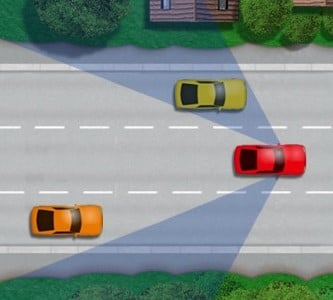 Blind Spot, Turn Signal and Brake Light Detection Using Retractable Camera (DiMenichi): U.S. Patent No. 9,843,734
Blind Spot, Turn Signal and Brake Light Detection Using Retractable Camera (DiMenichi): U.S. Patent No. 9,843,734
Many new cars come with a rear-mounted camera that helps the driver see what is behind the car when backing up and notifies the driver when another vehicle is in the car’s blind spot. Great idea. But what about the millions of older vehicles on the road today that do not have this capability? The invention covered by this patent creates an exterior-mounted, retractable camera that offers multiple benefits:
- It enables the driver to see when a vehicle enters the auto’s blind spot.
- It gives the driver a view of traffic to the left and right of the car for safer lane changes.
- It can be maneuvered to show the driver if the turn signals and brake lights are working.
- It provides a view of the area immediately behind the vehicle for added safety when backing up.
- On trucks, it can be used to guide drivers when backing up large rigs.
- Unlike other exterior vehicle cameras that easily get dirty, reducing their effectiveness, the retractable feature of this invention keeps the camera lens clean.
- The unit can be linked to OBD port for automatic activation when turn signals are activated.
The camera can be mounted anywhere on the exterior of a vehicle, including on the side of a school bus or truck. Since the camera retracts, the lens is kept clean during snow, rain and other messy conditions. U.S. Patent No. 9,843,734 for a "Retractable Camera for Vehicle" would be a critical acquisition for any business in the auto after market.
Patent Brokerage Prospectus: Contact [email protected] to receive an analysis of each portfolio that includes:
- Executive Summary
- Patent Overview and History
- Technology and Investment Summary
- Market Research
- Company Analysis
- Illustrative Evidence of Use (if applicable)
We offer patents in these technologies:
- Agricultural
- Artificial Intelligence
- Automotive/Vehicular
- Aviation
- Banking/Financial Services
- Beverages/Foods/Nutritional Products
- Boat and Marine
- Cannabis and Medical Marijuana
- Construction/Building Trades
- Consumer Electronics
- Consumer Products
- Digital Currency/Cryptocurrency
- Drones/UAVs
- E-Cigarette & Vaping Technology
- E-Commerce
- Education & Training
- Energy/Power Generation
- Health and Beauty Products (HBP)
- Human Resources
- IoT Patents/Internet of Things
- Manufacturing
- Medical Electronics and Devices
- Mining/Drilling
- Mobile/Wireless
- Network/Location-Based Services
- Optics/Displays/Video/LED
- OTT Patents/Over-the-Top
- Packaging
- PCs and Notebooks
- Pharmaceuticals
- Robotics/Automation
- Semiconductor
- Shoe & Apparel
- Smart Home/Smart Office
- Social Media
- Software, Apps, and Architecture
- Sports/Sporting Goods
- Telecommunications/IP Telephony
- Warehousing/Material Handling
- Other
- Go to Patent Index
- Return to Patent MarketPlace

